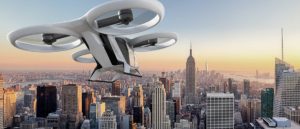
London, Singapore, and Stockholm are each prime examples of congestion pricing, a system to limit cars in downtown areas, especially at peak periods. So how about New York? How about Los Angeles? Are there enough alternatives to driving to give people a way to avoid steep tolls?
Singapore’s congestion pricing program (formally known as the Electronic Road Pricing System) began in the 1970s. It imposes varying fees based on road and time of day using on-board “gantries” that activate on-board transponders within Stockholm’s 13-square mile congestion zone. In Stockholm, the number of cars dropped in year one by 22%, from 450,000 to 350,000 vehicles.
Congestion pricing began in London in 2003. The City charges a flat fee of $16 a day to drive into the 8-square mile congestion pricing zone. And it proved effective in reducing traffic. Within a year, number of vehicles entering the zone dropped by 18%. Traffic delays were reduced by 30%, all resulting in decreased vehicle emissions. London recently added a “toxicity charge” to limit older, more polluting vehicles from entering the zone. Unfortunately, gridlock is back in London in large part due to a 30,000-car increase in ride-hailing services.
New York City is considering creating a congestion zone from 60th street south to the Battery, and plans to charge $11.52 for cars, $25.34 for trucks, and $2 – 5 per ride for ride-hailing services. The cost of setting up a system is significant: $214 million in London, $237 million in Stockholm for gantries and cameras. Singapore spent $110 million and requires each vehicle to have a transponder. And then there are revenues: $230 million a year in London, $155 million in Stockholm, and $100 million in Singapore. New York’s system could generate a billion dollars.
The Garden City of Singapore, despite its preeminent congestion pricing, is still mired in traffic. The nation has dubious distinctions: it has 4.8 kilometers of road per square km of land – the highest in the world, as well as the highest ratio of vehicles per kilometer of road (232). That dusts Japan at 63 vehicles/km road, and the U.S. as a whole (37). Given its congestion, it was suitable that in early February, at an air show in Singapore, that Airbus unveiled its Urban Aerial Mobility (UAM) technology… commonly known as the flying taxi concept. Also known as the City Airbus, its first test flight is scheduled for late 2018. It boasts a maximum speed of 80 mph, carries up to four passengers, is self-piloted, battery-powered, and features vertical take-off and landings.
Airbus is not alone: Uber signed a deal with NASA to help develop flying cars. Uber’s new CEO predicts that Uber Air will be operable in the next five to ten years. And Dubai recently witnessed the maiden voyage of a two-seated, 18-rotor taxi prototype built by German Volocopter.

